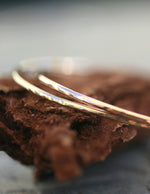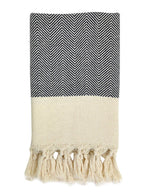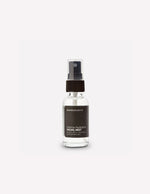
What Is Kombucha?
Fizzy, fresh, and full of gut friendly probiotics, Kombucha is a delicious sweet and sour fermented tea with sip-worthy style. While it may be making a splash as a seemingly new health trend, Kombucha has actually been around for centuries.
This golden colored sweetened tea is curated from yeast, bacteria, sugar, and bagged or loose leaf tea and gets all its magical health healing power from the fermentation process. Kombucha comes with a ton of health benefits, from antioxidants to probiotics, Kombucha is an overall immune pick-me-up.
The best part?
It's super easy to make at home (goodbye overpriced store-bought Kombucha).
Here’s all you need to know about embracing Kombucha and make your first batch of kombucha at home.
In this post:
- What You Need To Make Homemade Kombucha
- Simple Kombucha Recipe
- How To Make Kombucha Tea at Home (For Beginners)
- Kombucha Recipe Notes and Questions
What You Need To Make Homemade Kombucha
Ready to start brewing your first batch of kombucha? Yeah, us too. All you need for a basic kombucha recipe is sugar, water, loose tea, and a healthy scoby. (We bought ours on Facebook Marketplace, but you could probably also find one at your local health grocer. Or, if you want to make your own, then you can follow the tips we give on how to make your own SCOBY.)
And if you don't have access to a SCOBY, then you can make your own by using raw unflavored kombucha from the store.

Simple Kombucha Recipe
Ingredients
- 4-6 Tea bags (choose from black or green tea depending on personal preference)
- SCOBY (AKA the mother)
- 1 cup organic white sugar or cane sugar
- 4 liters of Clean, filtered water
- 1-2 cups of ready-made plain Kombucha (you can buy store bought Kombucha to kickstart your own) OR 1 healthy scoby
Equipment
- Kettle
- Spoon
- Large 1 gallon glass jar for brewing
- Dish towel with tight weave
- Rubber band
- Empty bottles or mason jar for storing your Kombucha
How To Make Kombucha Tea at Home (For Beginners)
When it comes to brewing your own fermented kombucha, it’s important to start with SCOBY. SCOBY stands for the symbiotic culture of bacteria and yeast. The SCOBY is a vital part of the kombucha as it's where you get all those glorious probiotics and amino acids.
This is the home of the bacteria and yeast and it’s how you transform sweet starter tea into kombucha.
There’s no denying that the SCOBY looks strange. With the texture and appearance of a rubber disc, it also sits on top of your Kombucha and forms a protective seal to keep bacteria out. You can either source a SCOBY from someone who is making Kombucha or you can buy store-bought kombucha to use as starter tea to make your own.
When you brew kombucha, you will do it in two phases: the 1st fermentation and the second fermentation. The first fermentation is where you will use the starter tea and SCOBY to grow the bacteria and yeast that kombucha is so well-known for. The second fermentation is when you add the flavor, usually by combining the brew with fruit juice.
Once you have your SCOBY sorted, follow these simple steps to get your kombucha project on the go.
- Clean everything with hot water! It’s super important to make sure that no lingering bacteria gets into your Kombucha mix so be sure to get everything as sterile as possible.
- Bring the water to a boil in a large kettle or pot add the tea. Let the tea bag or tea bags steep for around ten minutes or so until the water has had the chance to cool completely.
- Remove the tea bags and set aside.
- Pour the starter tea water into your glass jar where you will brew kombucha.
- Stir in the sugar until it dissolves.
- Add in the SCOBY and 1 cup or 2 cups of ready-made raw Kombucha liquid.
- Cover the jar with a clean dish cloth or tightly woven cloth and make sure it's secure with a rubber band around the top to keep it tight in place.
- Find a cool dark place for storage and stash your Kombucha there for 10 days to ferment away from direct sunlight. Ignore it totally if you can for the first few days of fermentation to let it do its thing.
- Don’t touch it and instead take a break while you let it do its thing for its first fermentation.
- After 10 days take a tentative sip. If too sweet, you can leave it brewing for a day or so more until it hits your taste preference. If too sour, maybe brew for 7 days next time. Warmer climates will reduce the ferment time whereas cooler climates will take longer to ferment.
- Scoop up and remove the SCOBY and put aside for your second ferment and save a cup of liquid for your next fresh batch of Kombucha.
- Pour your homemade Kombucha tea into bottles with a little bit of fruit juice (for flavor) and set aside for the second fermentation. Leave a little space between the top of the bottle and the liquid to allow space for bubbling during this second ferment.
- Store in the fridge for several months and say congrats on your first batch of finished Kombucha!
Kombucha Recipe Notes and Questions
Fermenting Kombucha isn’t as complicated and scary as it sounds. To make it even easier, we break down some of those common questions about the process to ensure that your kombucha journey is fabulous and fuss-free.

Is there alcohol in Kombucha?
While all fermentation gives way to a smidge of alcohol, Kombucha isn’t designed to be a party drink. The amount of alcohol produced from commercial brewers is usually very slight, meaning that the Kombucha buzz you get will be from its health-giving properties and not from its boozy content.
There are several factors that can impact how much alcohol you create in Kombucha and the homemade variety does tend to see some of the higher numbers with many hitting the 3% level. When Kombucha has been heated at higher temps or when certain kinds of yeast have been used, these things can raise the alcohol content.
However, if you are making kombucha at room temperature at home for the first time, then you likely won't get much alcohol from the fermentation process.
Is Kombucha really good for you?
Despite its slight booze content, bottled Kombucha is one of the best drinks you can sip for complete and glorious gut health. This is exactly why so many millennials have started making kombucha at home in the first place.
In fact, much of our overall wellbeing can be linked back to a healthy gut.
From a divine digestive system to a positive mindset and a strong immune system, there has been a ton of research into how our health is related to the gut.
And kombucha helps fix it all.
Some of the most noticeable health benefits of fermented kombucha tea include:
- a good source of probitiocs
- when made with green tea, it can help reduce belly fat, improve cholesterol, and reduce the risk of breast cancer
- a good source of antioxidants
- the acetic acid produced when brewing kombucha has strong antimicrobial effects against bacteria and yeast
- a possible supplementary treatment for diabetes
- antiproliferative and antimicrobial properties against cancer cells
So, yeah, brewing kombucha could possibly be the next step in your all-natural health regimen.
Also, Kombucha is delicious. Sweet, sour, fizzy and like a party on your tongue, brewing Kombucha is a beautiful thing.
Can you make Kombucha with tap water?
It’s best to do your kombucha brewing with filtered water. This doesn’t mean that you can’t get the water from the tap, but it does mean that you will need to find a way of filtering it before using it to brew up your kombucha. The problem with tap water is that it often comes with a lot of chemicals, such as chlorine, lead, atrazine, nitrates, and more.
Besides the fact that this poses a health risk to you, it also poses a risk to the living organism that is responsible for fermenting your brew. If you really want to use tap water, you can always boil it thoroughly before use or even use charcoal filters first to ensure it's squeaky clean and free from chlorine and chloramines, and other chemicals that can find their way into standard tap water.
Does Kombucha make you poop?
One of the prized benefits of having your own cool kombucha batch is the fact that it lends a helping hand in sorting your digestive system out. Everyone has their own slightly different internal setup and some people have more sensitive stomachs than others, so the way your body responds to this fermented beverage may vary. If you tend to veer on the side of a sensitive stomach then yes, kombucha can make you poop. For those who struggle with regular toilet habits, then kombucha could help kick your constipation into touch as it gets to work on balancing your gut flora.
What is the best tea for Kombucha?
Whether you prefer the healing benefits of light and fragrant green tea or if you prefer the darker and dreamier bitter black tea, both of these kinds of leaves make for a luscious jar of kombucha. You can also choose to use white tea or Oolong tea too but you need to make sure that whatever tea you choose has the nutrients that kombucha needs to thrive. To stay alive and healthy, the Kombucha culture relies on caffeine, theanine, and nitrogen along with a few other compounds that are most commonly found in black and green teas. Don’t worry if you aren’t overly keen on the taste of these loose leaf teas as you can make flavored kombucha by adding in all kinds of different flavor from cacao to ginger and even fresh fruit juice in the second fermentation.
How long will a SCOBY last?
Now back to the SCOBY of it all. Once you have your SCOBY, it can be in a continuous brew for between 6-9 months. If your SCOBY is dehydrated, then you can stash it in the fridge for 3 months.
The best part about brewing homemade kombucha is that each new batch produces a new SCOBY that can be used in future batches. For this reason, many people keep their extra SCOBY's in a SCOBY hotel, which is basically a large gallon jar filled with a little bit of starter kombucha liquid and all of your extra SCOBY's.
If you chose to place your SCOBY hotel in the fridge, then it sort of pauses the activity of the bacteria, causing it to hibernate. When you're ready to use them again, just pop them out and start your next batch of kombucha. Always keep an eye on your SCOBY to ensure it's in tip-top health, watch for signs of a bad odor.
How do you make Kombucha SCOBY from scratch?

If you cannot get a SCOBY, then you can make a SCOBY from scratch by combining bagged or loose tea and sugar and some ready-made (already fermented) commercial kombucha, either store bought or from someone you know who has already brewed up kombucha. If you do buy kombucha to make your own SCOBY, make sure that you opt for the unflavored kind.
- Combine 3 1/2 cups of warm water with 1/2 cup of white tea sugar and stir until dissolved
- Add 3-4 bags of black tea, or 3-4 teaspoons of loose leaf black tea contained by mesh ball and let steep
- Add 3 1/2 cups of room temperature water and stir to combine
- Remove the tea and pour your mixture into a large gallon jar
- Add 1 cup of your starter kombucha, preferably unflavored raw kombucha from the store (include those weird clumps at the bottom of the bottle!)
- Stir to combine, then cover the jar with a tea towel secured with a rubber band
- Set in a warm and dry place to let it ferment
- After about 4 weeks, you should have a fresh SCOBY floating at the top that can be used to make your next batch
For those keen to grow their own SCOBY, you need to become obsessive about cleanliness. Make sure all your utensils, jars, and hands are scrubbed as you won’t have a protective SCOBY keeping the bad bacteria out. Watch for signs of rotten behavior in your SCOBY and Kombucha brew – it should be bright and bubbly and smell tart and slightly vinegary. A healthy SCOBY should be white or light brown in color and will likely have some brown or chunky clumps floating around it.
Any cheesy whiffs or fuzzy green and black bits will certainly mean that your brewed Kombucha batch has gone bad or something has gone wrong. To help keep the fruit flies out, cover the jar with a tea towel secured with a rubber band.
Can you touch SCOBY with bare hands?
Feel free to touch your SCOBY but always try and remember to do so only with clean hands. Try and wash your hands with some white vinegar before handling and you won’t need to worry about the spread of bacteria and potentially ruining your Scoob. During the ferment and fizz process you should try to avoid touching your SCOBY at all.
How do you make a SCOBY without a starter?
For your new SCOBY to thrive you need a starter liquid. While it is theoretically possible to make SCOBY without a starter liquid it’s a hell of a headache, a truly delicate task, and there’s a chance it could take generations to get it right.
Can you eat the Kombucha SCOBY?
Despite their strange and less than edible look, you can actually eat your SCOBY and it's really good for you. That doesn’t mean you can just straight up chew on your SCOBY as they can be very tough but you can incorporate it into some recipes. From SCOBY smoothies to soups, jerky, and stir fry’s, there are plenty of options for cooking up a storm with your SCOBY’s.
Are you planning on getting involved with Kombucha making? Share your fizzy fun tips with us in the comments and let us know all about your success stories whether it's your first batch of Kombucha, your secondary fermentation or whether you just have a continuous brew on the go.





















 TOP
TOP



